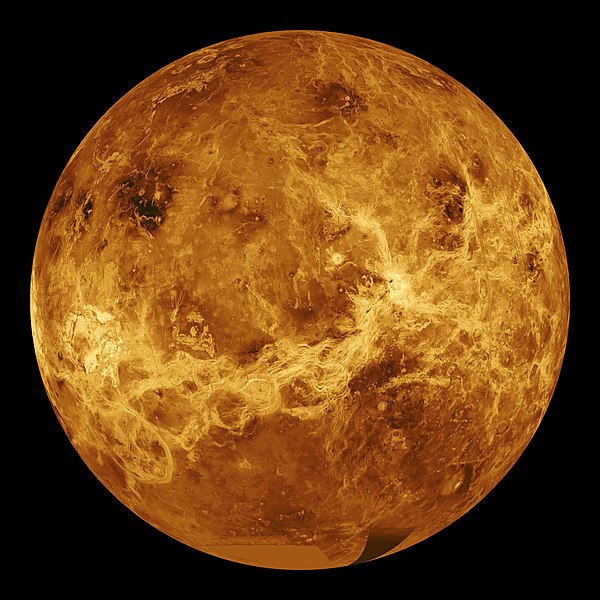Venus Facts
Planet Profile
| Type | Terrestrial |
| Age | 4.503 billion years |
| Length of Year | 0.62 Earth year |
| Satellites | 0 |
| Radius | 3,760 mi |
| Mass | 4.8675×1024 kg |
| Volume | 9.2843×1011 km3 |
| Orbit Speed | 35.02 km/s |
| Dist. from Sun | 108 million km, ave |
Below are some of the facts about Venus:
- Venus is the second planet in the solar system, and one of the 4 terrestrial planets in our solar system. Its position is between Mercury and Earth. It is also called the sister planet of Earth because of its almost equal mass and size.
- Venus is the closest planet to Earth with an average distance of 41 million kilometers away.
- Venus has a layer of clouds, which is opaque and does not let you view the surface. These clouds are made of sulfuric acid.
- Venus is the next brightest object in the sky after the moon with a magnitude of -3.8 to -4.6. That is why in some bright and clear day it’s easily visible if you know where to look.
- Venus is known as a morning star and also the evening star. That’s because some people saw this in the morning and some people noticed it at the evening, and thought it to be two different stars.
- One Venus day is longer than one Venus year. That’s because Venus spins really slow on its axis, and rather rotates faster on its orbit. Venus completes one year in 225 Earth days, and completes one day in 243 Earth days.
- The diameter of Venus is smaller than Earth by 638 km, and has 81% that of earth’s mass. Venus is similar to Earth in having a core, a mantle that’s molten, and an upper crust.
- There are no rings and moons in Venus.
- The first spacecraft to visit Venus was Mariner 2 in 1962 and was successfully landed on by Venera 7 in 1970.
- It is believed by scientists that Venus once had lots of water and a climate similar to earth, which later with time got destroyed, as all the water ebbed off with extreme heat. Now the planet has a hot and challenging condition where life cannot survive.
- Venus rotates in an opposite direction like Uranus. No other planet in the solar system rotates counter clockwise on their axis like Venus. This kind of rotation is called retrograde rotation.
- Venus is the hottest planet, and has an average surface temperature of 462 degrees C. that is because of the high concentration of Carbon dioxide in its atmosphere. The concentration is 96.5%.
- Venus experiences no climate and seasons. That’s because Venus has no tilt at all along its axis.
- Movement of solar winds is slow across Venus. Hence temperature variations are the least, and the day and night temperatures do not alter much.
- Venus is much older than Earth. Where the surface of Earth is 100 million years old, the surface of Venus is some 300 to 400 million years old.
